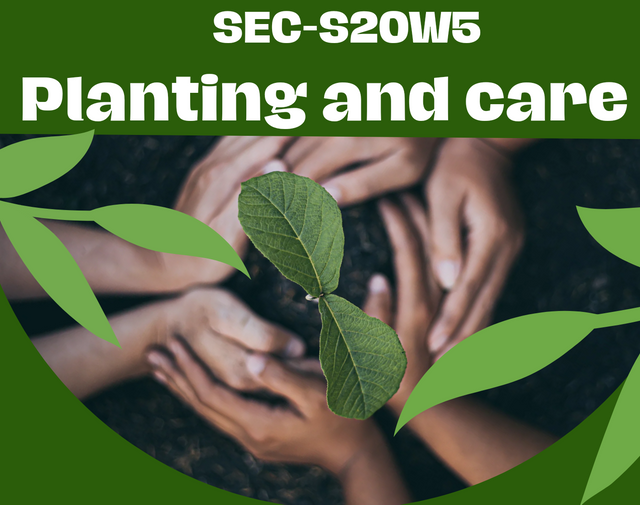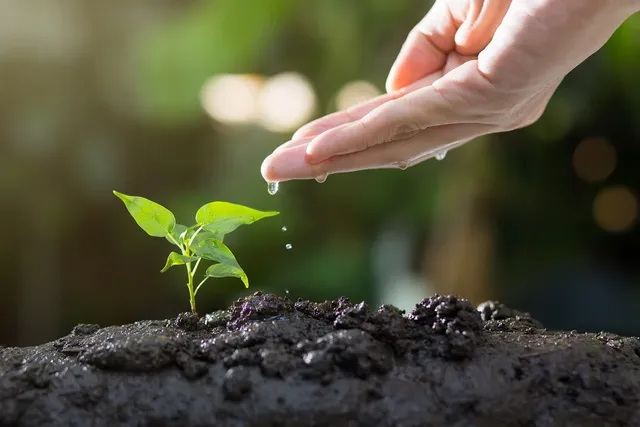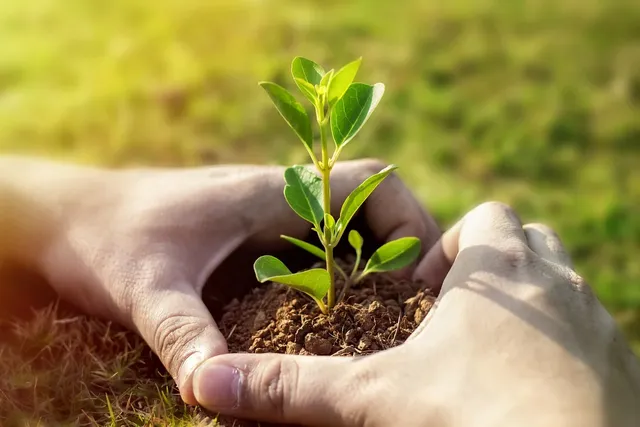"SEC | S20W5:"Planting & Care"
 Image designed using canva app Image designed using canva app |
|---|
Agriculture is incredibly important. Despite the challenges, it remains a vital source of food.
I'm excited to be taking part in week 5 of the engagement challenge. The topic "planting and care" is fascinating, and I look forward to sharing my thoughts based on my knowledge.
Which season does your region/country falls; and what are the best planting times and why are these times the best? |
|---|
In Nigeria, agriculture greatly depends on the weather, which determines when to plant and harvest crops. It's important for farmers to understand the different seasons to maximize productivity and manage risks effectively.
There are two main seasons in Nigeria that affect farming:
- Rainy Season (April to October)
- Dry Season (November to March)
During the rainy season, there's a lot of rain, which is crucial for most crops. This season can be divided into two parts:
- Early Rainy Season (April to June): Farmers plant crops like maize, yam, and rice.
- Peak Rainy Season (July to September): Crops continue to grow and benefit from heavy rains.
The dry season has little to no rainfall and is divided into:
- Early Dry Season (November to January): Crops like maize, rice, and millet are harvested.
- Late Dry Season (February to March): Irrigation is important for farming. Vegetables and some cash crops like tomatoes and onions are grown using irrigation during this time.
Before starting any farming work, it's important to clear away old crops and dry plants before the rainy season. It's also crucial to get the land ready to control weeds, restore plant nutrients, and create a soft soil bed for transplanting or direct seeding. This means preparing the land before the rainy season begins.
Land clearing can be done by hand or using machines. After clearing, farmers should wait for the rain to start before moving on to the next step, which involves making heaps, ridges, or beds, depending on the type of crops they plan to grow. To be rest assured, the rainy season is the best planting season in my region/ country.
Why
• Farmers believe that crops thrive with the natural watering from rain showers.
• Rainwater helps break down leaf litter and dead plants, therefore supplying the soil with great nutrients like nitrogen, phosphorus, and potassium. These nutrients supports the healthy growth of young plants and increasing their chances of survival.
• Rain reduces evaporation and keep the soil moist for longer periods. It gives cooler temperatures as to when compared to the scorching heat of summer.
• The rainy season makes it easier for roots to grow and spread. Well-established roots are important for the plant to absorb water and nutrient, holding the plants firmly in the ground and increasing their fertility.
What is the importance of planting trees in the right place and in which places can trees be planted? |
|---|
Many people like to enhance their gardens by planting trees. Most of them do it to add beauty or to create extra shade during the summer. However, trees offer more benefits than you might realize. Aside from being relaxing, connecting us with nature, and having a calming effect, trees also play a significant role in protecting the environment. Some importance of planting trees includes;
• Managing Erosion
• Offering Wildlife Habitat
• Stopping Water Contamination
• Strengthening Soil
• Mitigating Climate Change
• Providing Natural Air Cooling
• Conserving Water
• Lowering Urban Temperatures
• Sustainable Energy Source
• Purifying Air
The best place to plant trees are tropical zones or since there are different trees in shapes and in sizes, it can be planted at least 15 feet away from buildings to create enough room for roots and branches to get their normal full size.
Planting a tree has many environmental benefits. When you strategically plant trees around your home, it can have a huge positive impact on the environment. This includes improving the quality of life in your community, contributing to environmental efforts, and helping to combat climate change.
What kind of fertilizers or organic fertilizers should be used to prepare the soil before planting? |
|---|
• Compost: Compost is a mix of natural ingredients that's great for plants and soil. It's a top choice for folks who love gardening at home. It helps the soil and nourishes plants, providing both short-term and long-term benefits.
• Phosphorus Fertilizers: Phosphorus fertilizer is a nutrient-rich product that plays a crucial role in modern agriculture. It's the main nutrient in this type of fertilizer, and its effectiveness depends on the phosphorus pentoxide content.
• Manure: Manure is made from decomposed plants and animals, and it's used to boost soil productivity. It's a natural type of fertilizer, also known as farmyard manure or natural fertilizer, sourced mainly from animals and plants. When added to soil, it prepares it for planting.
• Wood Ash: The leftover ash from your wood fire is great for your garden. Use the light grey ash at the bottom of your fireplace, not the black part. Wood ash raises the pH of acidic soil and is best used when recommended by a soil test.
• Potassium: Potassium is the main nutrient in potash fertilizer. If your soil lacks potassium, a fertilizer with a higher last digit could be helpful.
What is the correct method of using pesticides and fungicides for gardening and which pesticides/fungicides can be used? |
|---|
As we approach fall, it's a good time to focus on enhancing your lawn. Late September and early October are ideal for treating lawn weeds. When dealing with lawn pests, it's important to use pesticides correctly for the best results and to minimize harm to the environment.
Always make sure to read and follow the instructions on the label when using pesticides. Wear the right Personal Protective Equipment (PPE) like gloves, long pants, a long-sleeved shirt, and eye protection as listed on the label.
Apply pesticides at the recommended rates to avoid resistance and ensure effectiveness. Using more product than directed can reduce effectiveness and cause sprayed weeds to burn back instead of being fully killed. This can leave brown spots in the lawn.
When using pesticides, it's important to watch the weather. Avoid applying pesticides on windy days because the spray droplets can easily be carried by the wind to unintended plants.
Insecticides like organophosphates, pyrethroids and carbamate are used to kill insects.
Herbicides like bensulide, dimethenamid-P, and propanil are best to kill weeds.
Rodenticide like aluminium and Zinc Phosphide are used to kill rodents.
Fungicides to control fungi, mould, and mildew
What home remedies can be used to protect plants from the root or back garden? |
|---|
Natural Pest and Disease Control for Your Garden. You can make simple sprays and solutions using everyday kitchen ingredients to protect your garden from pests and diseases.
Onion, Garlic, and Chilli Spray
Onion, garlic, and chilli can naturally repel insect pests due to their compounds.
Castile Soap Spray
Made from vegetable oils and plant-based extracts, castile soap acts as a versatile pesticide by dissolving insects' exoskeletons and causing them to dry out.
Dilute Milk Solution Spray
Dilute milk can function as a fungicide, similar to baking powder and cinnamon.
Cinnamon Powder
Cinnamon powder contains natural anti-fungal properties, making it an effective natural fungicide for your garden.
Baking Powder Spray
Baking powder, containing sodium bicarbonate, can create an alkaline surface that helps prevent fungal diseases like powdery mildew.

I invite @nancy0 @mariami @pandora2010


Upvoted. Thank You for sending some of your rewards to @null. It will make Steem stronger.
Welcome to the agro-learning challenge season 20.
Observations and suggestions:
. Yes! The planting season in Nigeria is primarily dependent on the two season types and as well on plant/crop type. Some are best planted during the early rains because yield performances within those seasons (late March to May), whereas some do well during the dry seasons but are dependent on irrigation systems to attain their peak yields Thanks for those clarifications. But is maize among the dry-season harvests?
. Before planting is done, it is best to have soil testing done for proper fertilizer and organic manure application. This helps with precision and better soil nutrient availability.
. Good post presentation and knowledge shared.
Thank you for your participation. We hope to see you in week 6.
Remember to share your acticle on Twitter using the #steem #steemit $steem tags